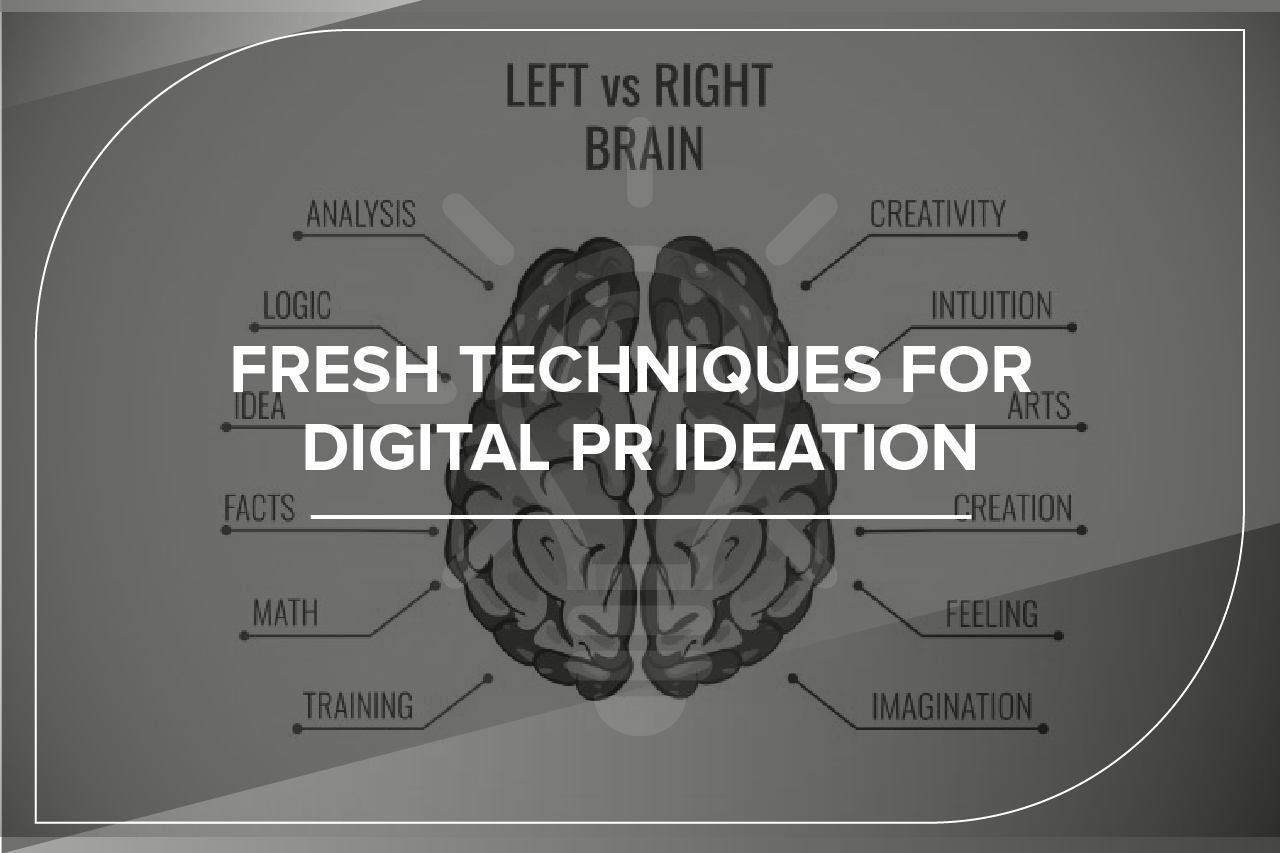Digital PR Isn’t Link Building. It’s the Most Profitable Channel You’re Ignoring
Digital PR

Once the ideation phase of a campaign is complete, it can be very difficult to revisit once the content has been created and outreach has begun (and it can help you to avoid 31 of the most common Digital PR mistakes too!).
We spend a lot of time at JBH on the ideation process – building a chunk of time into each campaign schedule to ensure that we don’t end up rushing the process. However, digital PR ideation can be a very challenging, unruly and rude activity that often brings the best and worst out in people!
One of our go-to books The Content Marketers Guide to Ideation is packed with strategies for content ideation and many simple and fun techniques that you can try with groups of all sizes, to get you flexing your muscles on both sides of the brain.
So, here are 4 of our favourite techniques for a curious, harmonious, and productive ideation session…
The first challenge is often getting a range of thinkers together.
One of our go-to resources The Content Marketers Guide to Ideation recommends that there are four roles you must inhabit.
A good creative mind should be able to switch between the following mindsets:
Most importantly every team needs an artist – someone who thinks differently and has vision.
The rules
Take it turns to to inhabit each role for each idea – this will give you a fresh perspective and make you more open to other people’s ideas.
Look for opportunities not solutions
You’ve been given a brief and it’s all too easy just to stick to the brief and find solutions – ideas that as closely as possible answer the brief. However, this is where the SAFE ideas live.
In digital PR, especially in the ideation stage, we need to look for opportunities – ideas that that are fresh, take a different approach or challenge common thinking in order to stand out and grab a journalists attention quickly.
The rules
Instead of saying ‘yes’ or ‘no’ when ideas start flowing, ask ‘what else?’ – this will enable people to develop an idea further instead of dismissing ideas before they reach unique heights.
By asking what else, you will end up with:
You’ll find this technique enables your team to generate a lot more innovative ideas.
Are too many ideas a bad thing? Not in our experience
Would you prefer to have loads of ideas to choose from with a couple of gems lurking in there or a list of ideas that are ok but don’t fill you with any excitement. If you’re like us and want a very long list of ideas with a couple of gems scattered about then the 100 Ideas technique is the one for you.
It’s really simple.
The rules
Gather your team and task them with generating 100 ideas in 30 minutes. This may work out at 10 per team member or 20 depending on the size of the group, but the pressure of having a clock can actually deliver some great ideas – especially with A-type personalities! You can lower the number of ideas or increase the time on the clock if need be!
Bring an idea to life by connecting with your senses
Synesthesia is most suited to topics or ideas that have a lot of imagery and emotion associated with them and is perfect for developing highly shareable content. The technique is quite unique as it relies on your senses, not your brain.
This works best with open-minded people with groups of five – one for each sense.
The rules
The technique should spark emotions that you can use within angles, headlines and imagery.
Once we have a shortlist of 5-10 (max) ideas, we suggest using a campaign development template like this one, that prompts you to consider the idea in a wider campaign context – exploring possible angles and headlines, example data points, relevant target sites and the format of the content.
Our Definitive Guide to Digital PR (everything you’ve ever wanted to know)
Digital PR Case Study: Foodie Road Trips